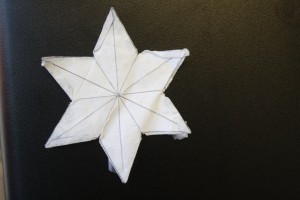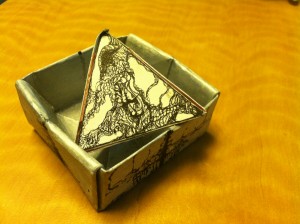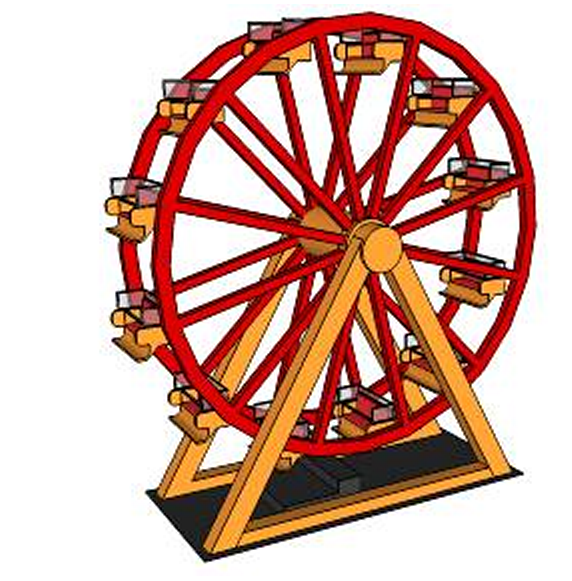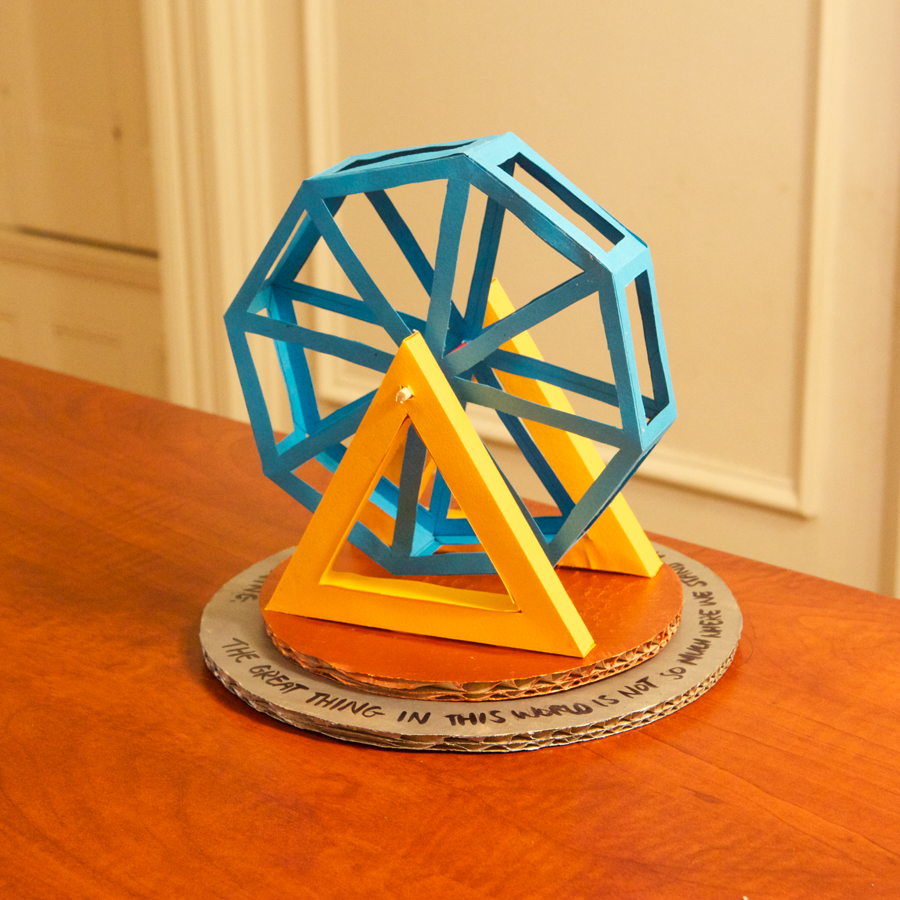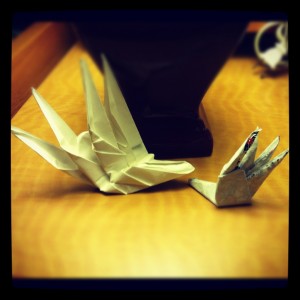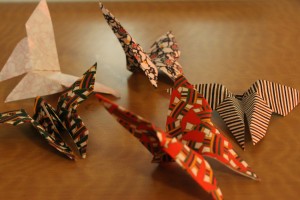For this piece I played with the idea of destruction as the opposite of progress. One could argue that I have destroyed a blank piece of paper by crumpling it into a ball. From the opposite of perspective, the blank piece of paper has progressed from a two dimensional surface to a three dimensional form. The folds in the crumpled paper are unintentional, influenced only by the form of my hands and the pressure exerted. This makes this crumpled ball unique to the mold of my palms and fingers.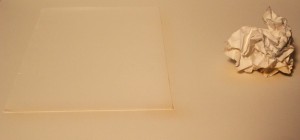
Destruction and Progress
Geodesic Sphere Origami
Our assignment was to create, out of origami, an object that represents ‘progress’. I have always been fascinated by nature’s ability to form geometry shapes out of atoms to molecules, an interesting example of this would be the bucky ball.
I chose to create the geodesic sphere origami using the laser cutter. To me, the sphere in many aspects represents progress because of its constant repeating faces, the more faces the object encompassed the more sphere it becomes. However the object also holds elements of failure, because although the more faces the object has the more sphere-like it will become, it will never become a sphere, which has only one face.
Origami Piece
My intention with the black ink brush marks was to convey (through the linear marks) a sense of “organized” life and artificiality. The sides of the triangle (taped together) are abstract ink renderings of flesh or body parts. The goal was to Question the progress of artificial intelligence, and it’s relation to the human narrative. Is flesh, or “organic” material superior to “Artificial?” Does a robot think in 4 dimensions, does a human think in 3?”Clearly this small assignment does not do the idea justice. However this was where my head was at the time.
Ferris Wheel
(From: Google Warehouse)
“The great thing in this world is not so much where we stand, as in what direction we are moving.”
Origami: Reducing a Mesh
Many of the 3d models you find in Google 3D Warehouse and Thiniverse will be too complex for folding.
This article describes a technique for reducing the number of polygons in the mesh. It involves downloading a free program called MeshLab (available for OS X and Windows). Follow these steps:
- Download the model in SketchUp format from the 3D
- Open the model in Rhino, Export the file as a “.obj” file (just as you do for opening it in Pepakura)
- Open the .obj file in MeshLab and follow the instructions in the above article
- Save the new/reduced mesh as “.obj” and continue wtih this file in Papakura
With this technique, I was able to take this model of a hand from the Google 3d Warehouse
and reduce it to this:
Which I was then able to unfold with Pepakura, far more reasonably:
Origami and Folding
TOOLS
- Trimble SketchUp: user-friendly 3D design environment, download the non-Pro version for free
- Grasshopper (parametric design) and Kangaroo (“Live Physics engine for interactive simulation, optimization and form-finding directly within Grasshopper) for Rhino
- Tomohiro Tochi: mathematician and origami expert, makes three simple and powerful programs for modeling origami folding
- Pepakura Designer: affordable commercial application for creating folding patterns from 3d models
BOOKS
- Check-out Ali’s ORIGAMI Books wish-list on Amazon
ARCHIVES OF 3D MODEL
- Google’s 3D warehouse: Many user-contributed models of everyday and strange objects; all in SketchUp format
- Thingiverse: More user-contributed 3d models; primarily geared towards 3d-printing
DIGITAL FABRICATION AND ORIGAMI (advanced applications)
- CurvedFolding: “a place where we can work together towards an open CAD standard, initially based on a quad-mesh geometry, for representing and modelling curved folding geometries…and show what we have crafted in paper, modelled in CAD and then fabricated”
- LiveComponents-NY: Blog by Seoul-based architect Hyoung-gul Kook; wide range advanced Rhino/Grasshopper-folding-related work; shares step-by-step tutorials on how to re-make GH definitions
- Space Symmetry Structure: Blog by London-based architect Daniel Piker; wide orange of advanced Grasshopper and Kangaroo definitions for attractors, origami, etc.
OTHER
- RoboFold: Design house focusing on CNC-folded metal and more
- Brian Chan: “the maker of anything” including a range of origami projects
- ShadowFolds: documents the work of origami master Chris Palmer
- Interactive Rings Tessellation: rings-type origami tessellation
- Paulo Taborda Barreto: extended Origami art
- Brief History of Curved Folding by Erik and Martin Demaine
- Christy Oates: Folding lamps, furniture and more
